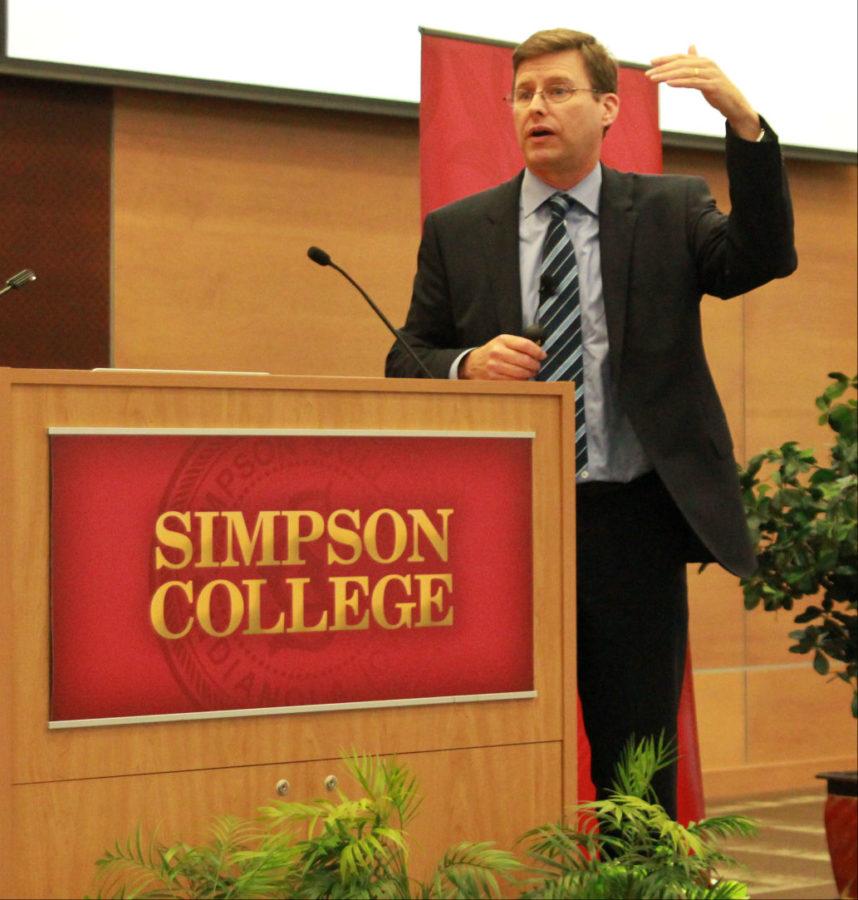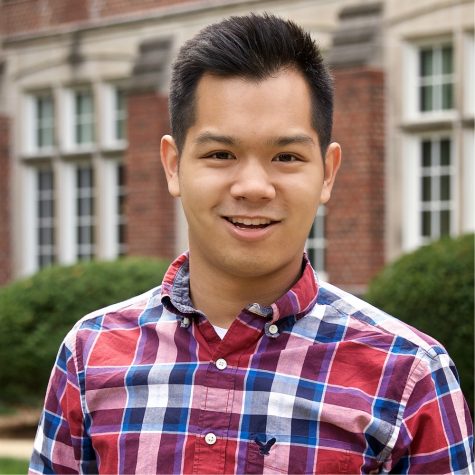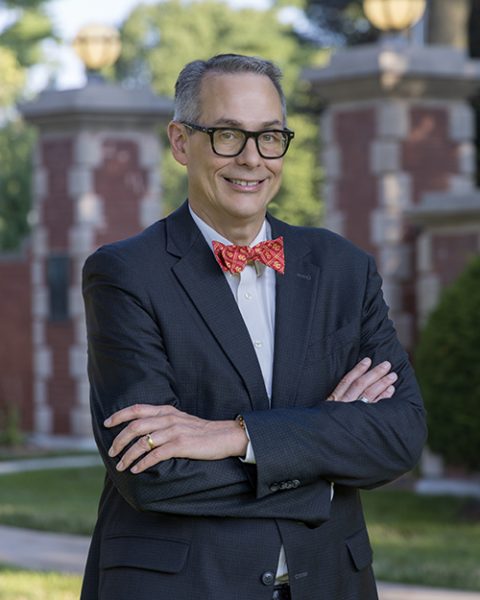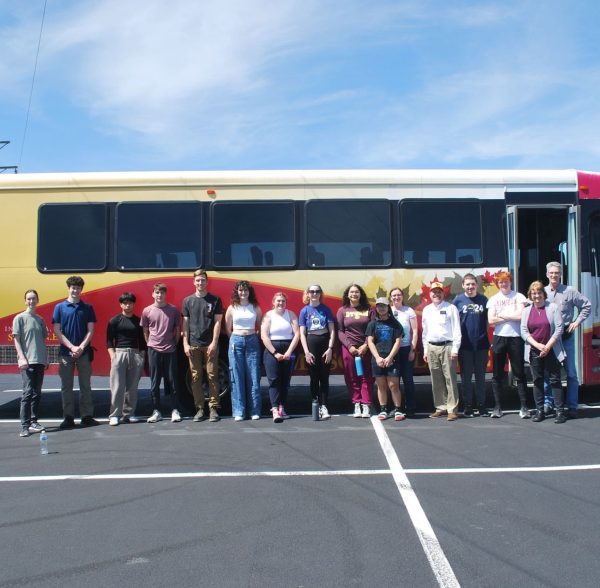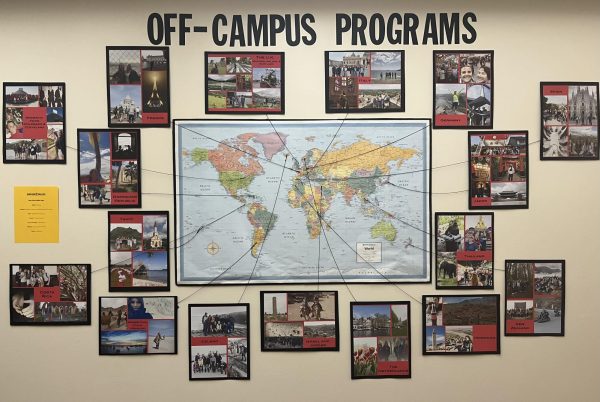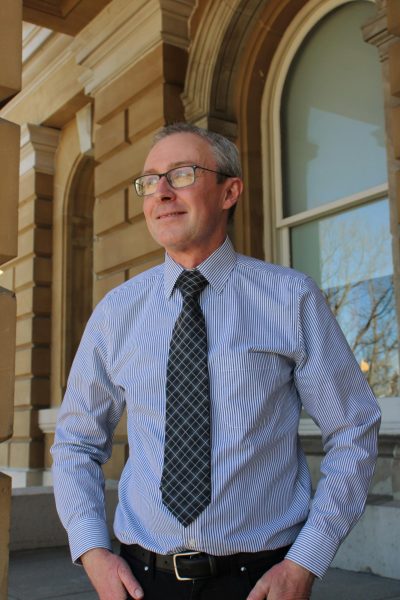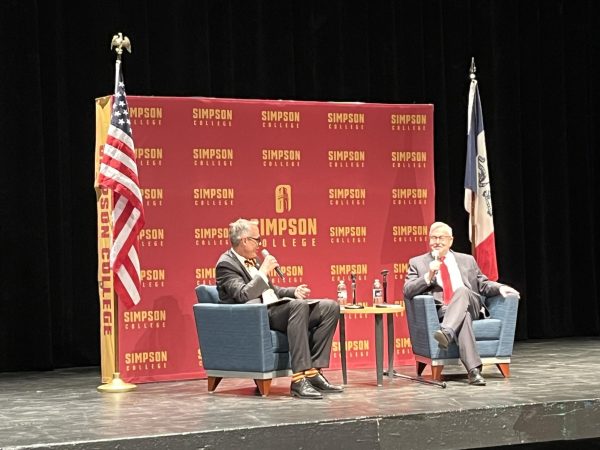How numbers can change the world, for better or for worse
October 16, 2015
In 2012, a Minneapolis man expostulated a local Target mailer for sending his teenage daughter coupons for baby clothes and cribs. Convulsed with rage, the man exclaimed, “Are you trying to encourage my daughter to get pregnant?”
A few days later, a manager called back to apologize, only to find it was the father who was remorseful. It turns out, he recently learned his grandchild was due in six months.
How did Target figure out a teenage girl was pregnant before her father?
Dr. Charles J. Wheelan, economist and senior lecturer at Dartmouth College, delivered the annual McBride Lecture at Simpson College and shared how statistics allow companies to turn data into intelligence to be used in government, science, innovation, education and other fields.
“The power of data and the power to see patterns, using our past behaviors, is stunningly powerful,” Wheelan said. “But at the same time, it’s just a pattern.”
So-called predictive analytics have been recently and aggressively used by retailers like Target to figure out needs of customers based on personal information long before an actual transaction occurs.
In this case, Target used advanced microprocessors to find unique behaviors of pregnant women, such as loading up on calcium supplements throughout their first 20 weeks, hand sanitizer being purchased close to their due dates and thousands of variables in between, thus enabling the company to effectively distribute coupons, emails and advertisements to recipients based on stages of the pregnancy.
Throughout the lecture, Wheelan endeavored to explain numbers’ potential to have profound positive impacts and its inadvertent devastating effects in both humorous and serious manners.
The process of predictive analytics is not new. More and more companies, such as Target, Netflix and Canadian Tire are embracing the technique, creating a $125 billion industry in 2015, according to Forbes.
In its simplicity, Wheelan explained statistics are tools for finding patterns. On one hand, a cumulative number can be used as a meaningful indicator. On the other hand, a number can be simplified, which sacrifices the subtlety and complexity of a situation.
A grade point average of a college student, for example, can represent the academic work throughout all four years – accounting for tests, homework, participation, etc. However, it cannot measure the difficulty, time requirements or adequacy of a professor.
“Sometimes we think what’s going on, but the actual data comes along, and it disabuses us of our prior assumptions,” Wheelan said.
Assistant professor of accounting Shane Cox, who organized the lecture, said the constant accessibility of data and its ability to track information is beneficial both in one’s profession and personal life.
“The cause and correlation is important, whether it’s finances, whether it’s decision-making, and maybe there’s an underlying reason,” Cox said.
He also said the overall message of the lecture, effectively changing the world for the better, can easily resonate with students.
“What I like about the lecture is that it drives home the point that it doesn’t have to be a particular discipline. All disciplines can make change throughout the world and in our communities,” Cox said.
Cox said he learned the importance of institutions like Simpson College, to have added value on more complex situations.
The impact numbers can have, Wheelan said, is influential on a social and policy standpoint and can directly impact a multitude of people.
Using data from the Fatality Analysis Reporting system, researchers have determined patterns of driving behaviors, such as electronic stability control, texting while driving, rollovers and hours of service, can be used to save lives.
With the decline of the payphone, Wheelan said information was not readily available, in that a cause-correlation effect could not accurately be placed purely by assumption.
Through the Framingham Study, researchers now can see a pattern – smoking causes cancer, stress causes weight gain, etc. – through a series of longitudinal data.
Scientists also have now started to look at the genetic component of diseases.
“When they started taking blood from your grandparents in 1950, there was no hope they could take a whole human genome and isolate it. But now they’ve got the data from 1950, we can change lifestyles and make people healthier,” Wheelan said.
Moreover, data analytics are being used to answer pressing social questions, especially after nationwide debacles of police shootings of unarmed citizens and school massacres.
Does putting more law enforcement on the street reduce crime?
In answering this causality, Wheelan said, “If you look at a cross-sectional analysis across different cities, you will get no relationship or the wrong relationship if, in fact, police are constructive.”
Researchers have found a teaser around this question. In Washington, D.C., police officers put on the ground for terrorist alert suspicions – reasons unrelated to street crime – they were shown to have an impactful reduction.
There was not a corresponding drop in crime in other neighborhoods where police officers don’t go.
“There are a lot of important and creative methodologies that describe these relationships,” Wheelan said.
Numbers also aid in the fight against poverty, according to Wheelan.
One economist took basic experimental methodology and brought the concept to an international level.
It was discovered in poor Indian schools, teachers were not showing up to class, thus resulting in lower performances in the classroom.
By randomizing schools – some the experiment, some the control – students who received the treatment were given a digital camera and a time stamp.
Students were asked to take a picture of the teacher, and in turn, the teacher would receive a cash bonus for every day they were present.
Not surprisingly, the conclusion was monetary incentives improved teachers’ attendance of class and students’ performance increased.
The economist’s findings are now being used in other fields, such as farming.
“Historically, we’ve been very bad at measuring what schools are effective and which teachers are effective in those schools,” Wheelan said.
One noted example, Northside College Prep in Chicago, illustrates a selective enrollment school that ignores any measure of value added, he said.
“What is happening is value added models,” Wheelan said. “We’re taking data on student backgrounds, on their tests from last year, or other socio-economic factors, and we’re saying, ‘Based on those previous backgrounds, what would we predict those test scores to be at the end of this year?’ And then we compare where they end up relatively to what we would predict.”
Instead of relying on the absolute level of a student, Wheelan warned of the egregious mishaps that can occur through dependence on numbers-based models.
A few warning labels:
All patterns from previous behavior are used to project the future.
“By definition, even though you’re making a prediction about the future, you are relying exclusively on data from the past, because we don’t have data from the future,” Wheelan said. “Be careful about when you extrapolate a trend, you will miss an inflection point.”
The housing bubble that burst in the late 2000s fueled the recession due in part to banks, financial institutions and mortgage companies that made their practices contingent on upward trends losing money.
Many of those risk models assumed the significant drop in real-estate prices is close to zero.
From an employer’s perspective, a human resources algorithm excludes potential chief executive officers like Steve Jobs – one who was a college dropout and, from a statistical viewpoint, an outlier.
“You have to be very careful about actually drawing the right conclusion from the numbers that present themselves,” Wheelan said. “For all the data and the math, at the end of the day, common sense has to judge. You can do enormously positive things, but you can also do inadvertent damage. It is our job to navigate that trend.”
Sophomore Logan Floyd, a marketing and public relations major, said, “I thought the speech was pretty impressive. Numbers don’t lie. I would just say be aware of your past because it can affect your future.”
Privacy concerns stemmed from the audience, though, with data having the potential to do more harm than good due to faultiness or poor judgment in releasing certain information.
Under current privacy laws, individuals’ names cannot be attached to data. Instead, companies attribute specific ID numbers.
The question then becomes: Do these advanced techniques justify their implementations in the pursuit of civil liberties versus national security?
At the rapid pace data is being stored, data analytics goes well beyond retailers and their quest to lure consumers into buying their product.
Sophomore Olivia Anderson, a political science, philosophy and Spanish triple-major, said she’s interested in the impact numbers can have on policy decisions and the ethics concerning data in terms of its usage in political campaigns or laws in general.
“I think some of the examples and how creative certain corporations and companies have been regarding data collection were really interesting, and it affects everyone,” she said.



